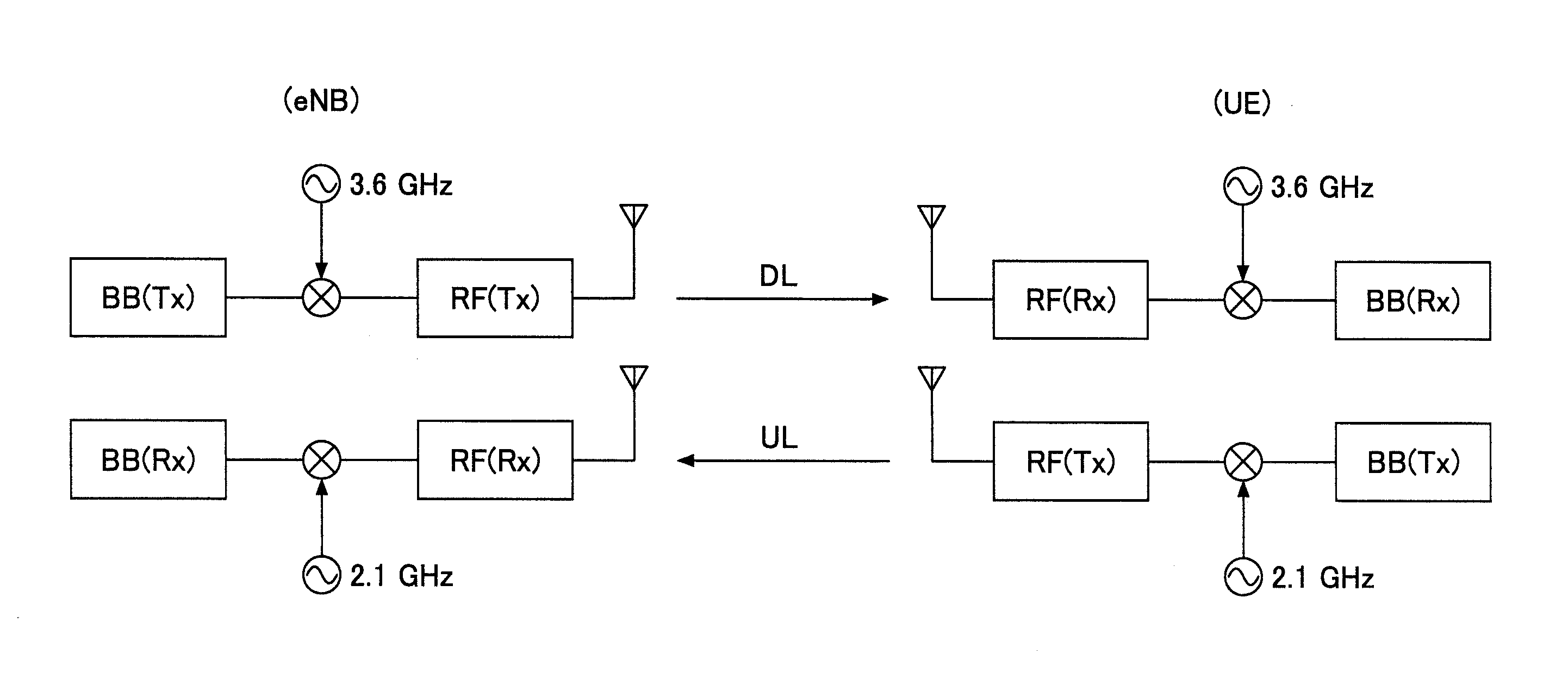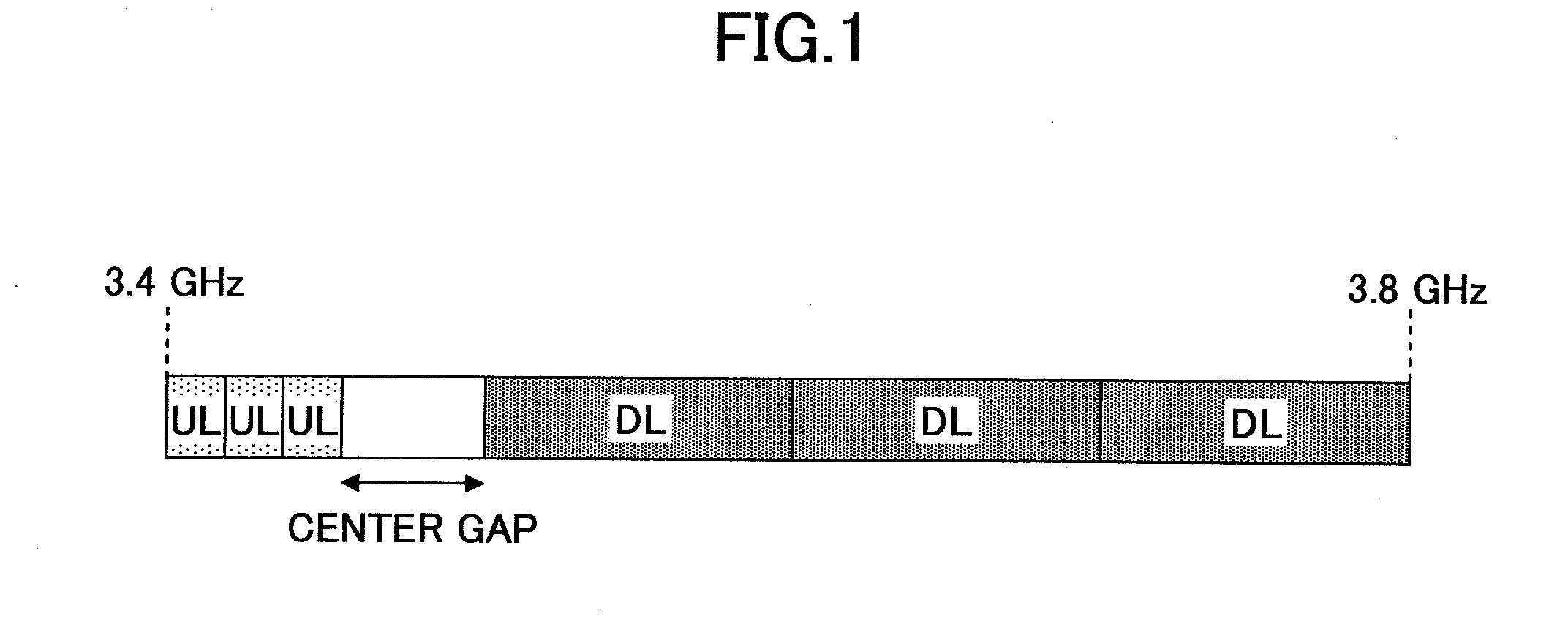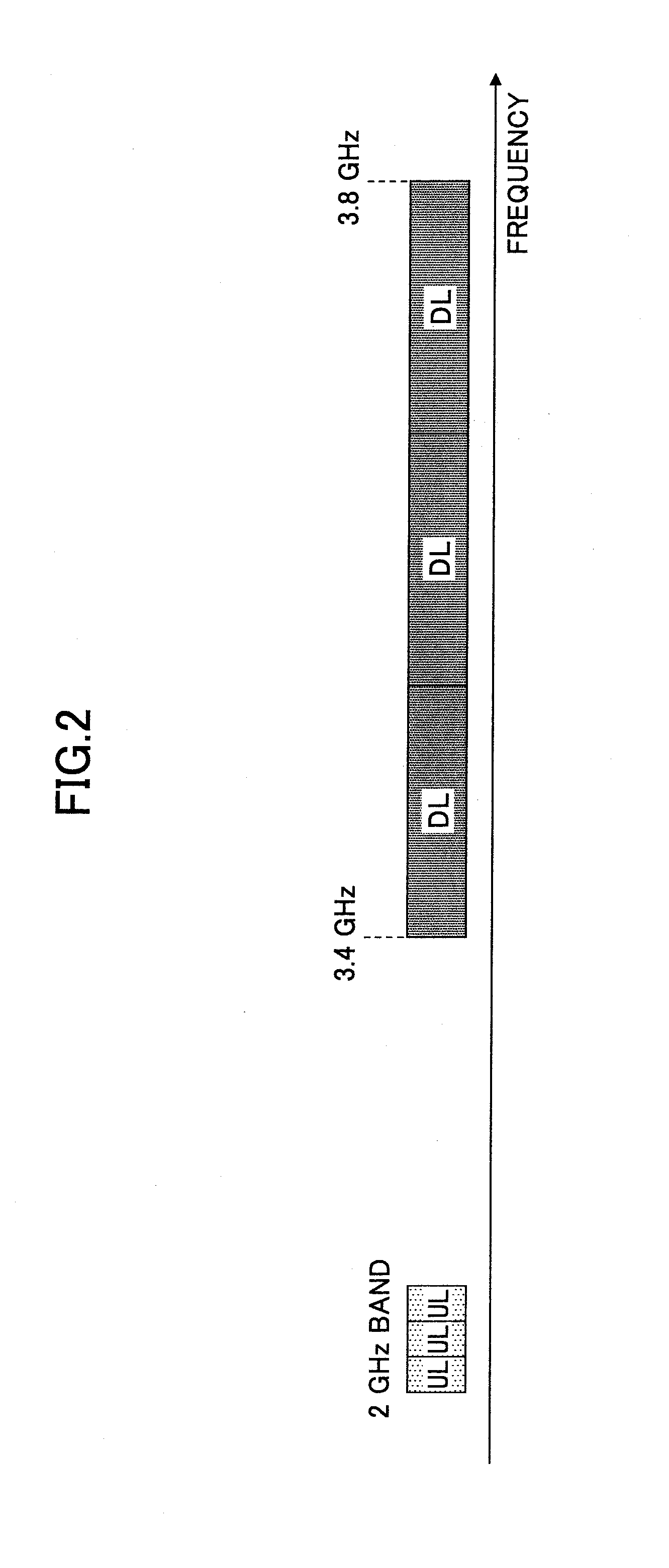Communication system, communication apparatus, and communication method
a communication system and communication method technology, applied in the field of mobile communication technologies, can solve the problems of increasing the propagation loss (path loss) of a signal, difficult to increase the transmission power of a user device, and inability to increase the transmission power to such a level. , to achieve the effect of improving the frequency efficiency
- Summary
- Abstract
- Description
- Claims
- Application Information
AI Technical Summary
Benefits of technology
Problems solved by technology
Method used
Image
Examples
first embodiment
[0026]FIG. 3 is a drawing illustrating a method of using frequency bands by using numerical examples. FIG. 3 corresponds to FIG. 1 and is used as a comparative example. In FIG. 3, it is assumed that there are first, second, and third mobile communication providers providing mobile communication services using the FDD scheme. Each provider uses one of frequency bands for downlink (DL frequency bands) indicated by “DL” and one of frequency bands for uplink (UL frequency bands) indicated by “UL”. A frequency band (center gap) for preventing interference between uplink and downlink is provided between the three UL frequency bands and the three DL frequency bands. The three UL frequency bands, the three DL frequency bands, and the center gap are provided in a frequency range of 3.4 GHz to 3.8 GHz.
[0027]The frequency bands assigned to the providers are called basic bandwidths or system bandwidths. In this example, each provider is assigned a basic frequency band of 20 MHz for uplink and a...
second embodiment
[0037]As described above, when a higher frequency (carrier frequency) is used, the path loss generally becomes larger and the cell coverage generally becomes smaller. For example, compared with a case where a 2 GHz carrier frequency is used, the path loss increases by about 6 dB when a 3 GHz carrier frequency is used. Here, it is possible to improve the signal quality of a data channel to some extent by appropriately controlling the transmission rate. The transmission rate can be controlled, for example, by selecting a data modulation scheme, a channel coding rate (or data size), and a spreading ratio. Meanwhile, it is difficult to effectively control the transmission rate of a control channel by performing adaptive modulation and channel coding (AMC). Even if AMC is performed, unlike a data channel, it is difficult to effectively vary the transmission rate of a control channel. For this reason, in a second embodiment of the present invention, data channels are communicated (transmi...
PUM
 Login to View More
Login to View More Abstract
Description
Claims
Application Information
 Login to View More
Login to View More - R&D
- Intellectual Property
- Life Sciences
- Materials
- Tech Scout
- Unparalleled Data Quality
- Higher Quality Content
- 60% Fewer Hallucinations
Browse by: Latest US Patents, China's latest patents, Technical Efficacy Thesaurus, Application Domain, Technology Topic, Popular Technical Reports.
© 2025 PatSnap. All rights reserved.Legal|Privacy policy|Modern Slavery Act Transparency Statement|Sitemap|About US| Contact US: help@patsnap.com



